[[“value”:”
Thank you for reading this post, don't forget to follow and signup for notifications!
David Higginbotham
Suppressing the .45 ACP is about as straightforward as it gets. The .45 caliber rounds hold their own with impressive ballistic performance thanks to the weight of their heavy projectiles, which happen to be the reason why it is easy to suppress. And the classic 1911 in .45 ACP makes an ideal host for a solid silencer.
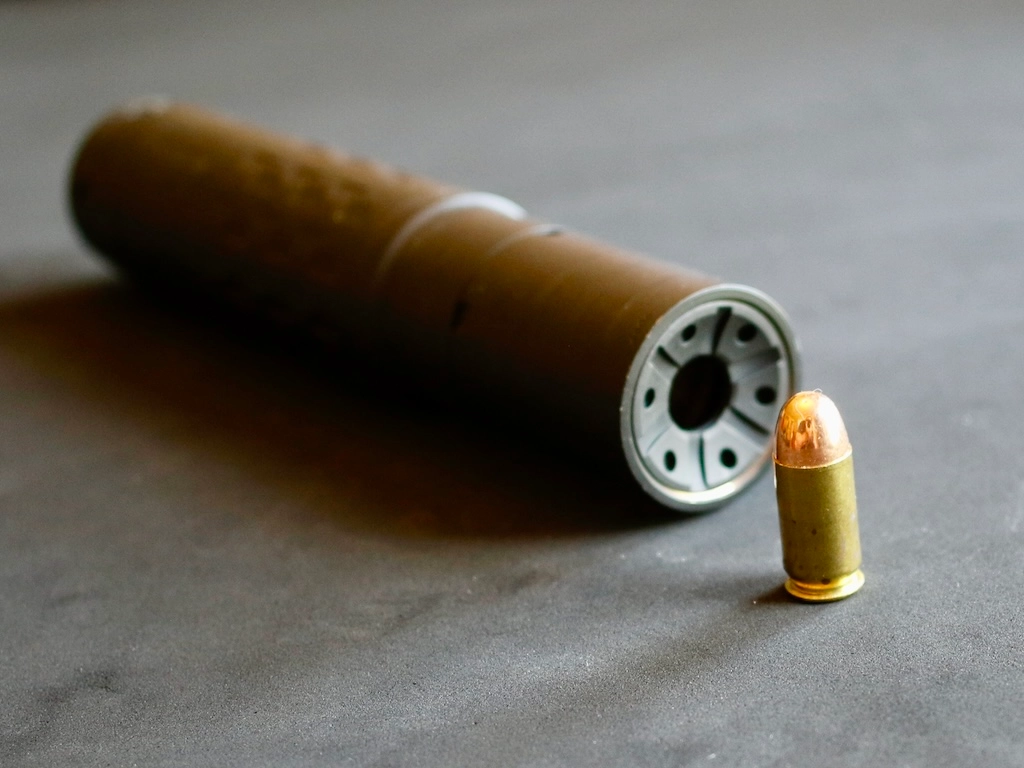
Why Is the .45 ACP a Natural for Sound Suppression?
The .45 ACP is a natural for sound suppression because its standard rounds are inherently subsonic.
Big, fat .45 caliber bullets are not fast, at least not by 9mm standards. The heavier the bullet, the slower it travels (assuming the powder load is the same).
If any of these projectiles build up enough steam to cross the sound barrier (1,125 feet per second), there will be a sonic crack that accompanies the noise produced by the combustion of gases in the chamber. With pistols, especially those like the 1911, there’s not much chance that a 230 grain round is going to break the sound barrier.
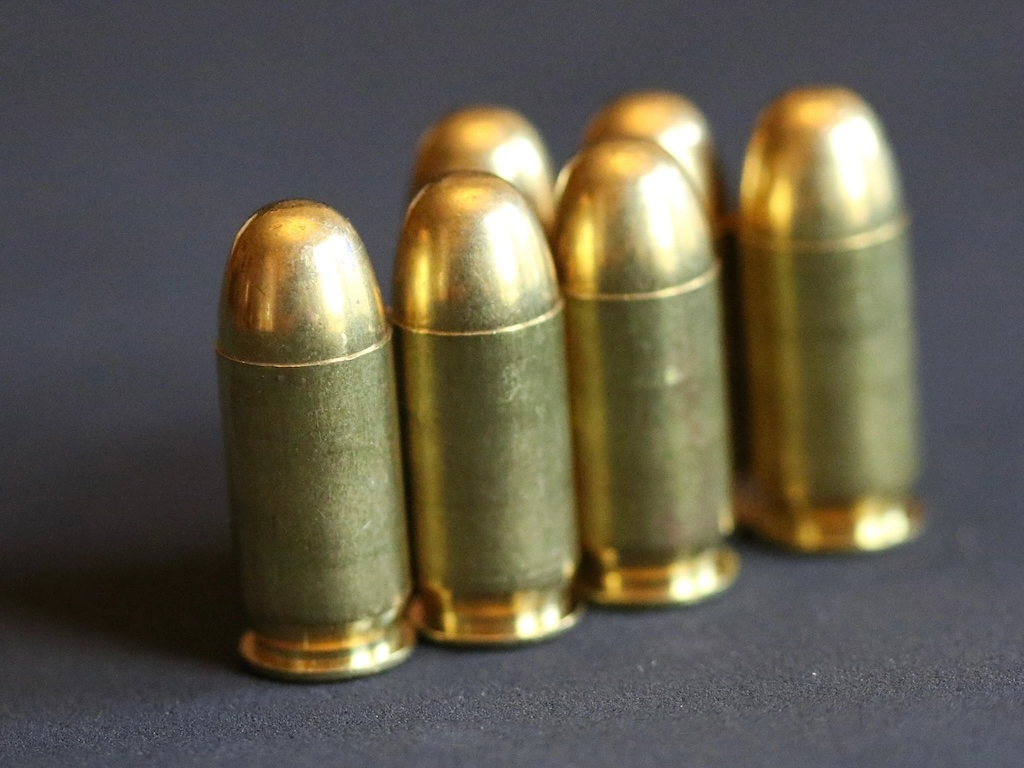
I remember a range session back when I was learning to shoot a 1911 and I was able to catch glints from rounds zipping (maybe that isn’t the right word, there) down the 100 yard range. Their brass jackets were catching sunlight, and it felt surreal. Some rounds are slow enough that you can see them.
.45 ACP bullets come in a variety of weights. At the low end, the composite rounds come in under 100 grains. Many of the defensive hollow points weigh in around 185 grains. Ball ammo has a standard set at the 230 grain mark.
What ultimately determines this, though, is a combination of factors. Bullet weight is one. The powder load and length of the barrel will also influence speed. Liberty Ammunition makes a 78 grain .45 ACP +P hollow point. Velocity on this oddball round is reported at 1,900 FPS from a 5” barrel.
At the other end, Buffalo Bore makes a hard cast flat nosed round that weighs in at 255 grains. This is a favorite of handgun hunters.

When in doubt, just remember there’s an inverse relationship between speed and weight, generally, and it holds true here, too. Rounds under 185 grains may break that sonic mark. Rounds over that mark likely won’t—at least not from a handgun. Shoot them from a Thompson, though, and they have more barrel in which to efficiently trap the expanding gasses of combustion. If you are looking at suppressing a rifle-length gun, you may need to experiment.
Going Hot with the Hybrid 46M and a Springfield Operator
For much of this review, I shot Speer Lawman 230 grain Total Metal Jackets. These rounds hold together, by design, and don’t shed lead inside a suppressor. The weight is right, the speed holds under the point of a sonic crack, and the Hybrid 46M on a Springfield Operator makes for a hearing-safe suppressed range session.
The Hybrid 46M is a modular design that can be run in a short configuration or fully assembled. In its short form, it adds 12.2 oz and 5.78”. When both sections are combined, it weighs 14.9oz and adds 7.72″.
While this isn’t a featherweight can, the 1911 isn’t a svelte carry gun, either. I’ve never been one to grouse about the extra weight of a suppressor, though. There’s always a tradeoff for the benefits of sound suppression, but I find it to be well worth it.
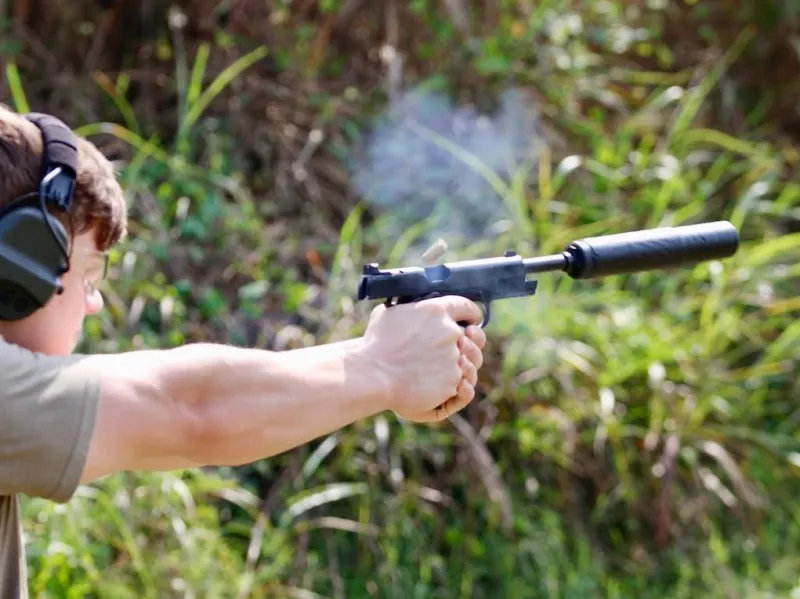
Will You Need a Piston?
If you are suppressing a .45 caliber handgun, yes. You will need a piston.
Suppressing any .45 ACP requires a big suppressor. I picked up the Hybrid 46M to suppress .45-70. It is a fantastic option for a one-can solution for centerfire rifles, but it has the added benefit of working well on pistols. When I was suppressing my Henry .45-70, I simply threaded the Hyrid 46M directly.
But extra mass on the end of the Operator’s barrel will prevent the pistol’s action from cycling with its intended timing. As the recoil drives back the slide and barrel—which are momentarily linked during recoil—the extra mass of the added suppressor wants to sit still. Without a piston, this interruption in the normal movement creates problems in many pistol designs.

Adding a Nielsen Device (commonly called a piston) puts a spring between the body of the suppressor and the connector that threads onto the barrel. When the gun fires, the barrel is free to drive backward as intended. The connecting spring compresses a bit, which leaves the suppressor itself at rest, before all the compressed springs rebound and realign the barrel, slide, suppressor—everything.
What is the Best .45 ACP Handgun to Suppress?
A 1911 with a factory threaded barrel marries the classic design’s reliable performance with sound suppression.
I’m a purist. The 1911 will always be, for me, the epitome of form and function. If the 2011 craze has showed us anything, it is that the only issue anyone could find with the basic 1911 was capacity.
I’ve long been a fan of Springfield Armory’s 1911s. I’ve owned a few over the years. There are three in the mix now: a Mil-Spec, a TRP, and this Operator. The Mil-Spec is a brilliant and functional historical homage. I don’t suppress it. The TRP is built to be carried. This Operator came with a threaded barrel, too, taking that versatility in classic design into a new level of functionality.
Springfield’s single-actions are timeless. Despite the ever-evolving list of upgrades, including rails, RDS cut slides, and threaded barrels, the company has yet to produce anything in this line that has felt faddish.
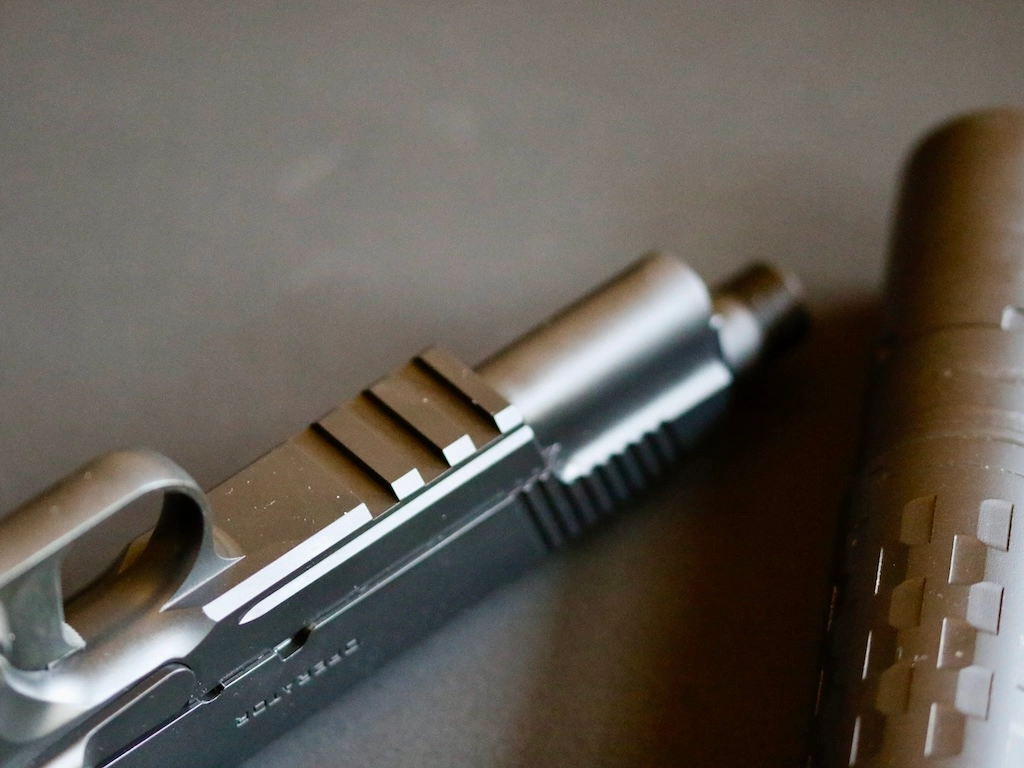
Adding a Suppressor to the Operator
As I mentioned above, you need three things: the gun, the suppressor, and a piston to join the two. Springfield sells this 1911 with a threaded barrel, making this a natural suppressor host.
I like the Hybrid 46M’s ability to run in a long or short configuration. This is the only suppressor I have that has a 46” clearance, so it wasn’t a hard choice for me. The 46M takes Charlie mounts. For connectivity to a rifle or a handgun, begin here.
Next, you’ll want a piston mount. This is where you’ll need some specific information about the thread pitch on your barrel. If your gun is built over here, you will likely have .578×28 TP. This is, by far the most common. If you have a gun from some of the more Eurocentric makers, you may have M16×1 LH. Either way, the piston itself needs to be threaded for the appropriate pitch.
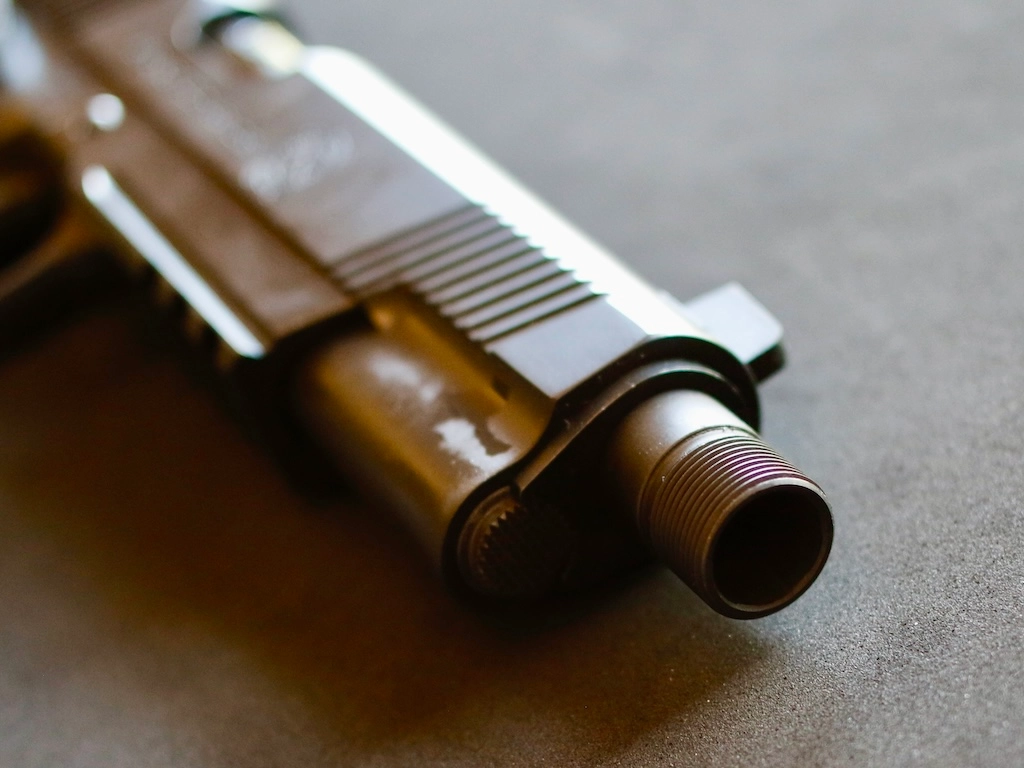
Attach the piston mount (the spring and retainer) inside the suppressor. Add the piston inside this and reassemble. This, then, can be screwed onto the threaded barrel of the pistol with ease. It isn’t as complicated as some would make it out to be.
If you would want to move a suppressor off of a 1911 and put it onto a Thompson, or any other fixed-barrel rifle, you would want a fixed-barrel spacer to supplement this setup. That prevents the suppressor from flexing under the spring tension the way it is designed to do on a pistol.
In the end, you will likely want a variety of pistons and attachments. SilencerCo has done an exceptional job of accessorizing these so mounts so that you can do direct thread, pistons, or QD mounts.

As the Hybrid 46M works for almost every caliber, all the way from 460 Weatherby Magnum down to rimfire, you will likely use it on a variety of host guns. The only thing you need to change is the mount, though you can change out the end-cap, too, for even better suppression.
Other .45s?
If you have something against the classic Browning masterpiece in its many interpretations, there are other options—though I’d note that they’re fast falling away.
- FN’s FNX-45 Tactical, or the FN 545 Tactical
- HK’s HK45 Tactical, or Mark 23
- Walther’s PPQ M2 SD
- Springfield Armory’s XD-M
- Sig Sauer’s P227 Tactical .45 ACP
In the last decade, much of the handgun industry took a hard turn back toward 9mm. The .40 S&W craze fell off. Most of the other random oddballs have either been forgotten, culled from the GLOCK catalog, or—like some of the new rounds designed for concealed carry—simply failed to take flight at all.
.45 ACP remains a stalwart here, and maybe that’s generational. As the 9mm handguns continue to see ergonomic improvements and genuine innovation, some of us still gravitate toward the classic simplicity of the 1911.
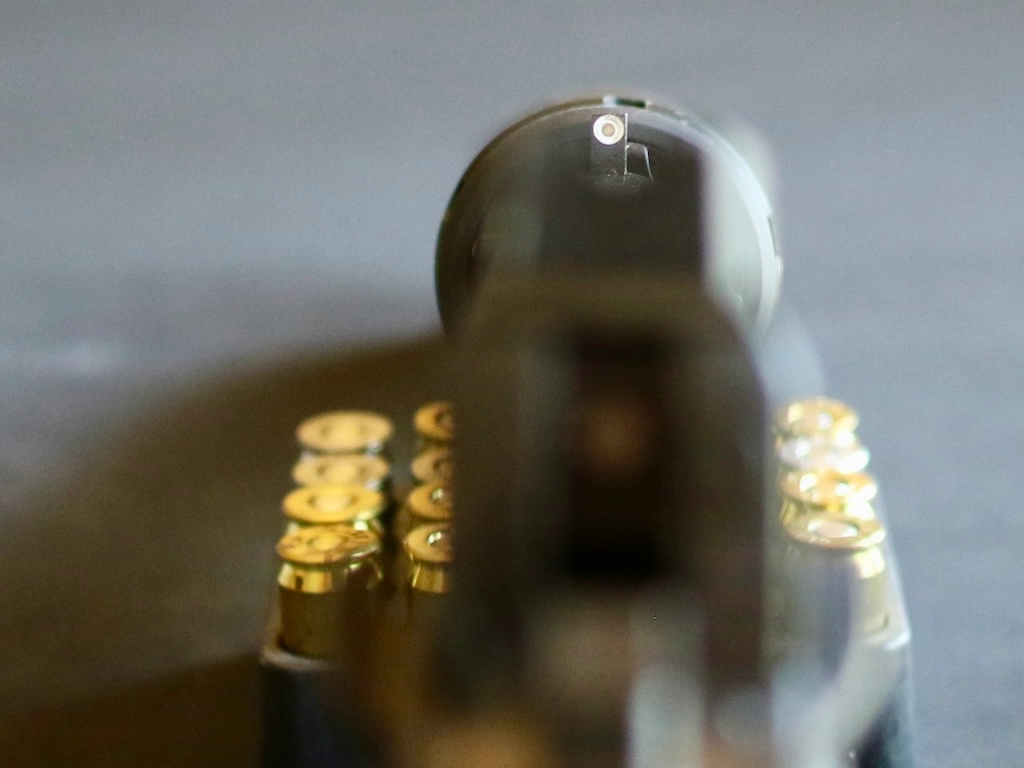
The Suppression Is Worth It
Through all of this, I’ve been dancing around a bigger question. Why would you want to suppress a .45 ACP? I’ve drunk the Kool-Aid. I suppress everything. When I go to the range and have to shoot within 300 yards of someone who isn’t shooting suppressed, I get an attitude.
On the Springfield Operator, though, the Hybrid 46M provides exceptional sound suppression. While it isn’t as whisper-quiet as my Sparrow with sub-sonic .22 LR, it is well below the hearing safe threshold. And the fat 230 grain Speer rounds hit a steel target and it sounds like a gong.
I’ve been carrying this combo in the woods, lately. I’m helping a friend eradicate a pig problem on land where we hunt whitetail, and shooting suppressed—everything suppressed—has kept us from creating too big of an impact on the animals we do want to keep there. A 230 grain .45 caliber round is ideal for finishing off a wounded pig.
There’s no need to justify what you want it for. Once you’re set up, though, I bet you’ll find plenty of excuses to use it.
David Higginbotham
The post Suppressing a .45 Caliber Pistol appeared first on SilencerCo.
“]]



